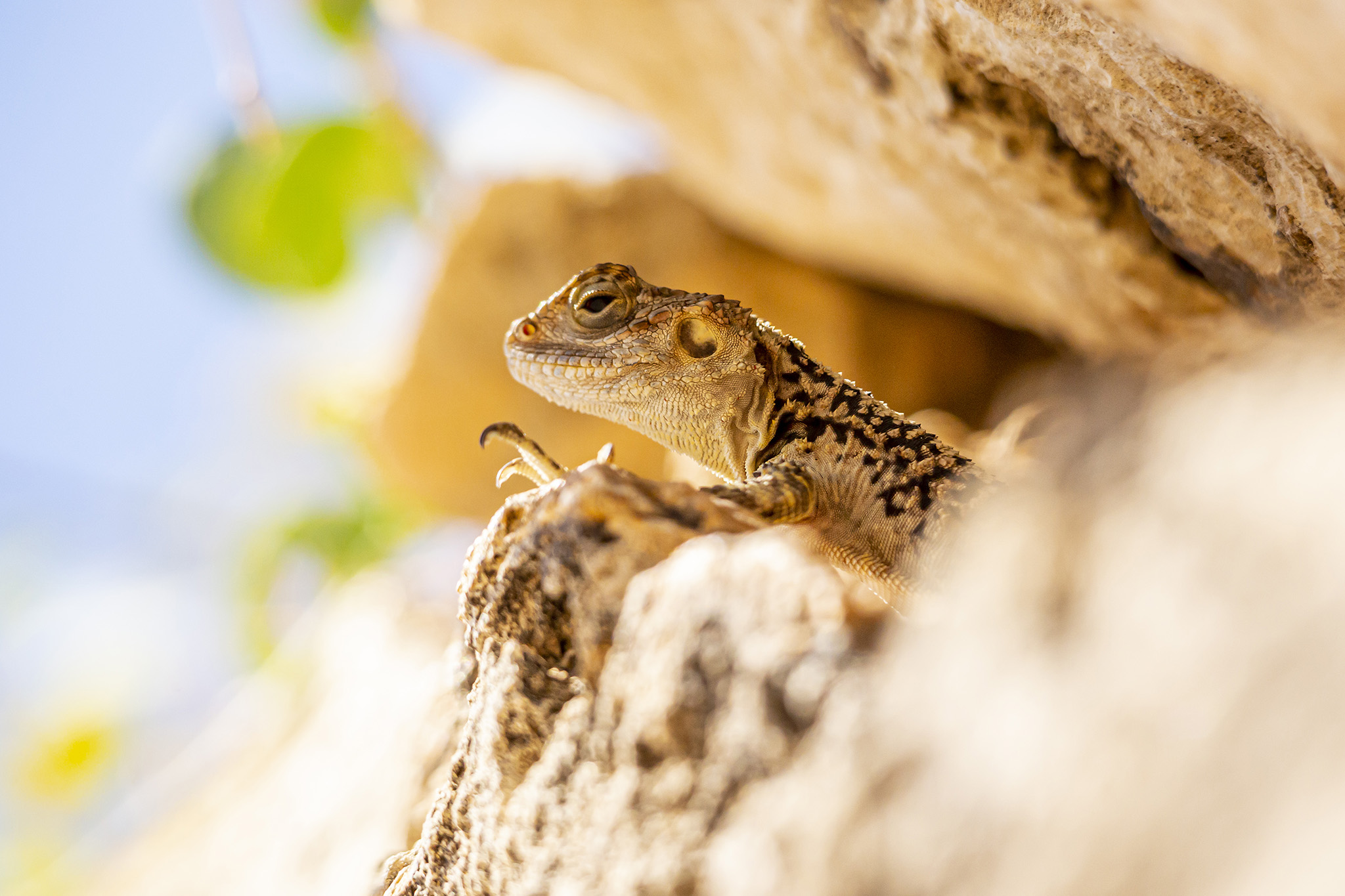Stellagama is a genus of agamid lizards native to the Middle East and North Africa. The most well-known species within this genus is Stellagama stellio, commonly referred to as the Middle Eastern or Turkish Spiny-tailed Lizard. Here’s a detailed description:
Physical Characteristics: Stellagama lizards are relatively large compared to many other agamid species, with robust bodies and distinctive spiny scales along their backs and tails. They typically have a flattened head with a pointed snout and well-developed limbs. Their coloration varies depending on the species and geographic location, but they often exhibit earthy tones such as brown, gray, or olive, with darker markings and patterns.
Habitat and Distribution: Stellagama lizards are primarily found in arid and semi-arid habitats, including rocky deserts, scrublands, and rocky outcrops. They are distributed across the Middle East and North Africa, including countries such as Turkey, Greece, Cyprus, Israel, Jordan, Lebanon, Syria, Iraq, Iran, Saudi Arabia, Egypt, Libya, and Tunisia. They are well-adapted to hot and dry environments, where they can often be found basking on rocks or seeking shelter in crevices to escape the heat.
Behavior and Diet: Stellagama lizards are diurnal and primarily insectivorous, feeding on a variety of invertebrates such as insects, spiders, and other small arthropods. They are agile hunters, using their keen eyesight and quick reflexes to capture prey. When threatened, they may inflate their bodies and display their spiny tails as a defensive posture to deter predators.
Reproduction: Little is known about the reproductive behavior of Stellagama lizards, but like many other agamid species, they are likely to lay eggs in nests dug into the soil or sand. Females may lay clutches of eggs during the warmer months of the year, with hatchlings emerging after an incubation period of several weeks.
Conservation Status: Stellagama lizards are not currently considered to be globally threatened, with stable populations in many parts of their range. However, like many reptile species, they may face localized threats due to habitat loss, fragmentation, and degradation caused by human activities such as urbanization, agriculture, and infrastructure development. Conservation efforts focused on preserving and protecting their natural habitats are essential for ensuring the continued survival of Stellagama lizards and other reptile species in the region.
Overall, Stellagama lizards are fascinating and ecologically important reptiles, valued for their adaptations to arid environments and their role as predators of insect pests. Their unique appearance and behavior make them a subject of interest for herpetologists, wildlife enthusiasts, and photographers in the regions where they are found.
Views: 1575
Subscribe to the newsletter:
